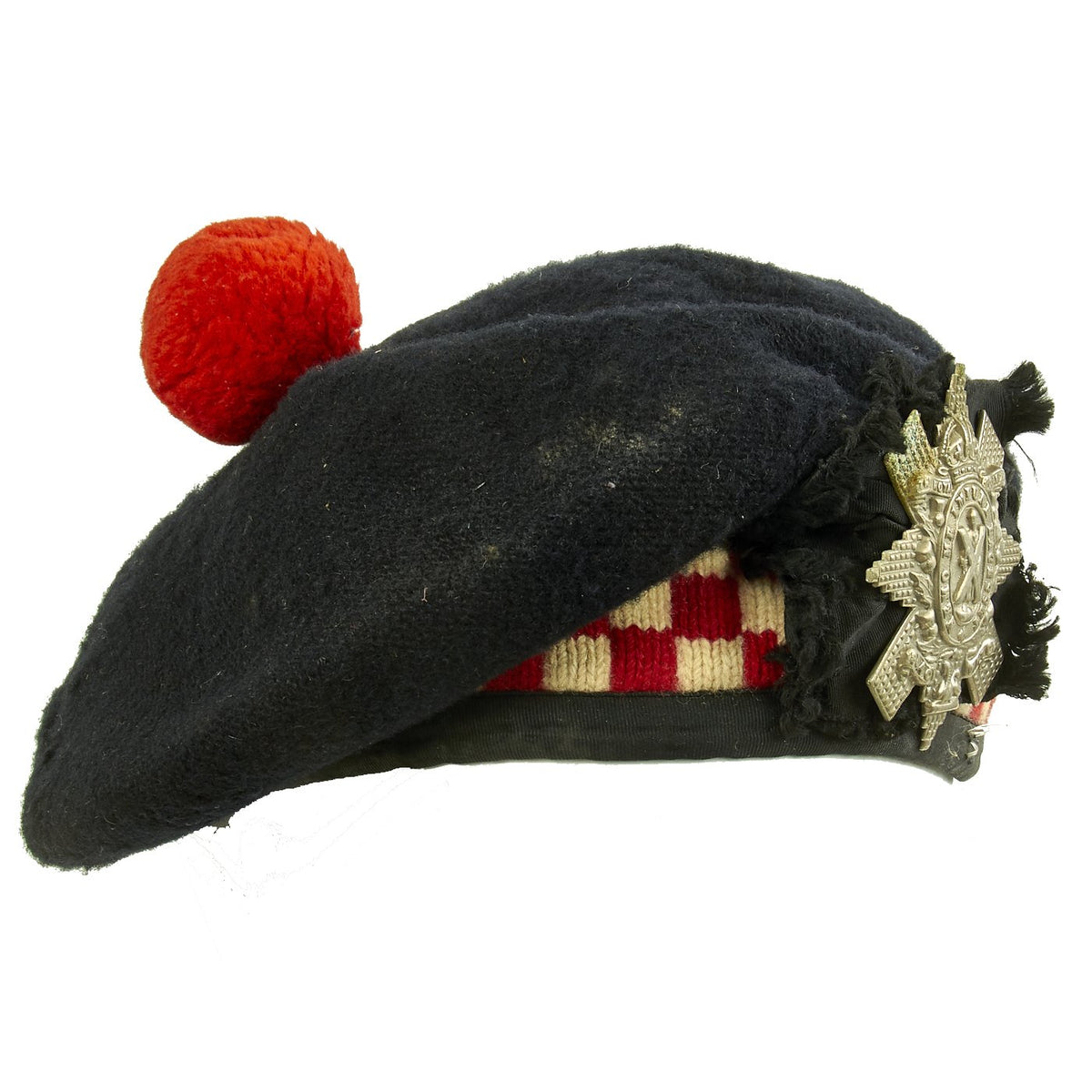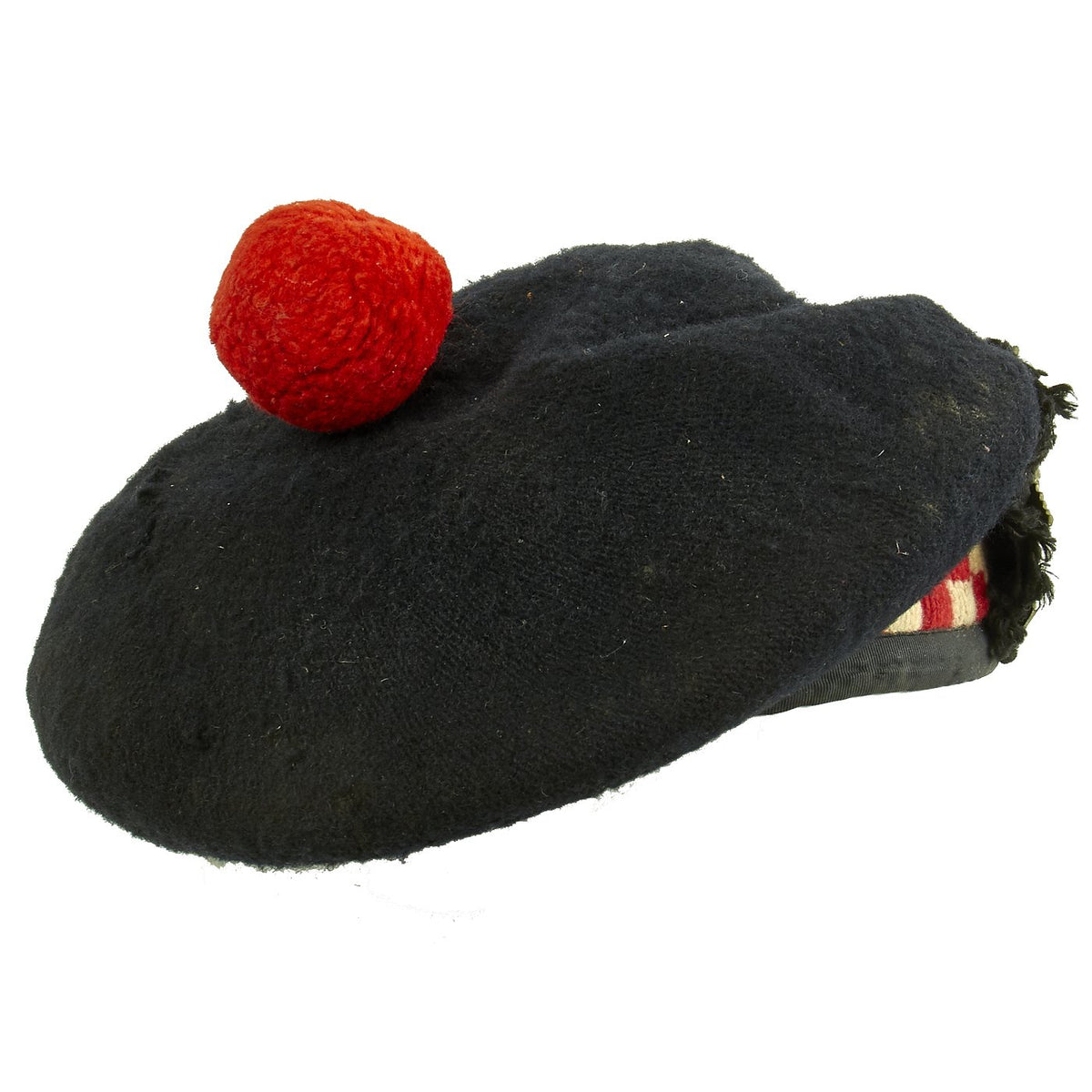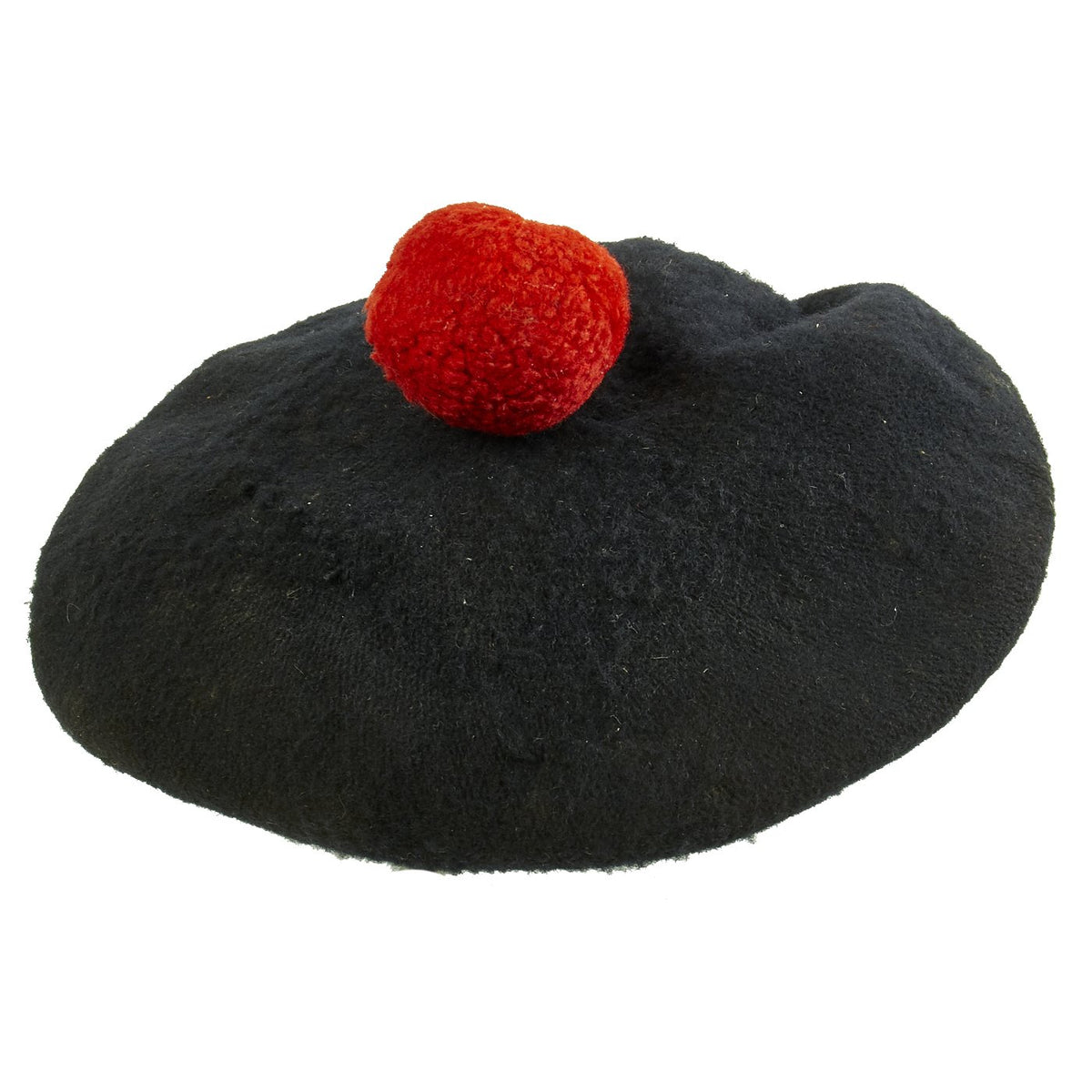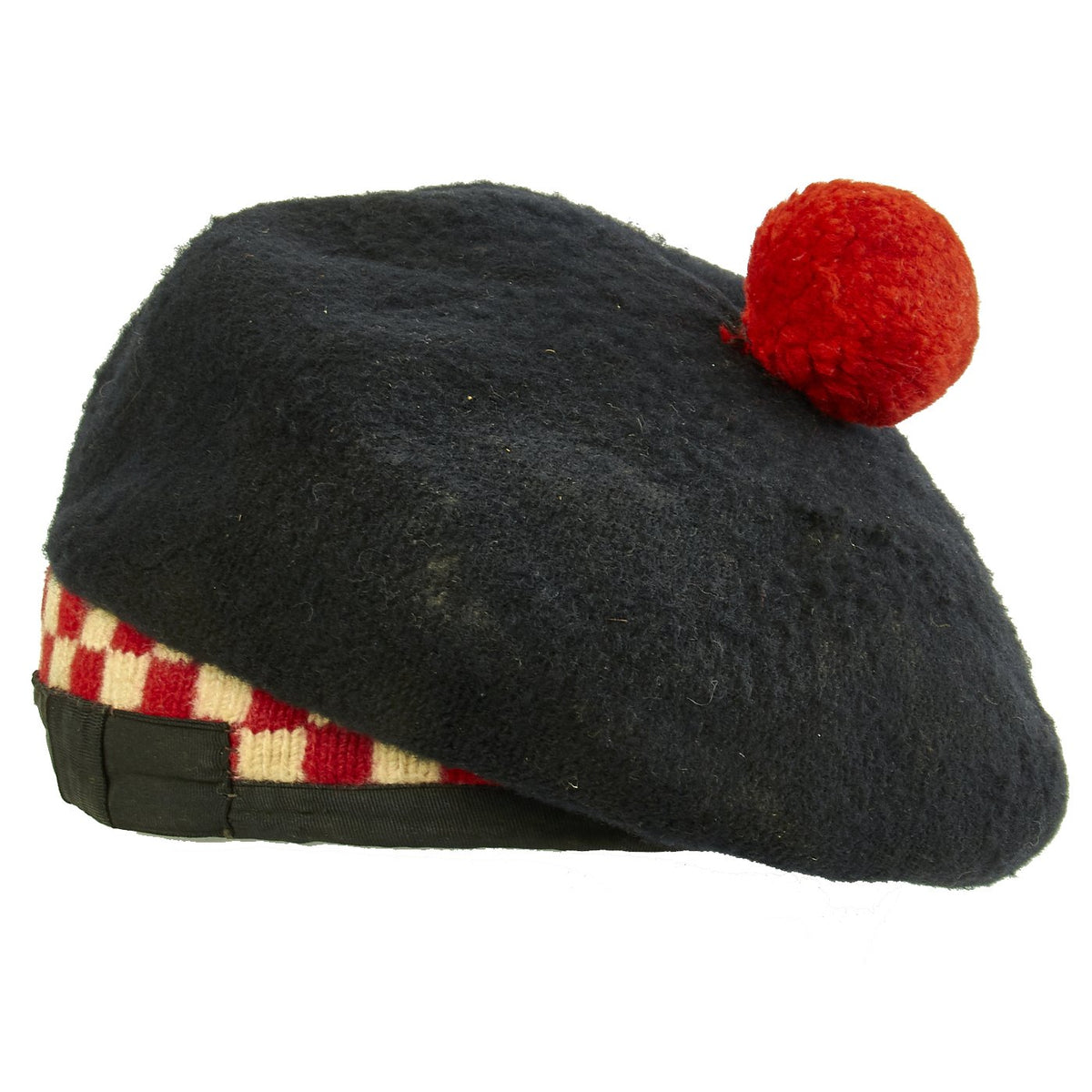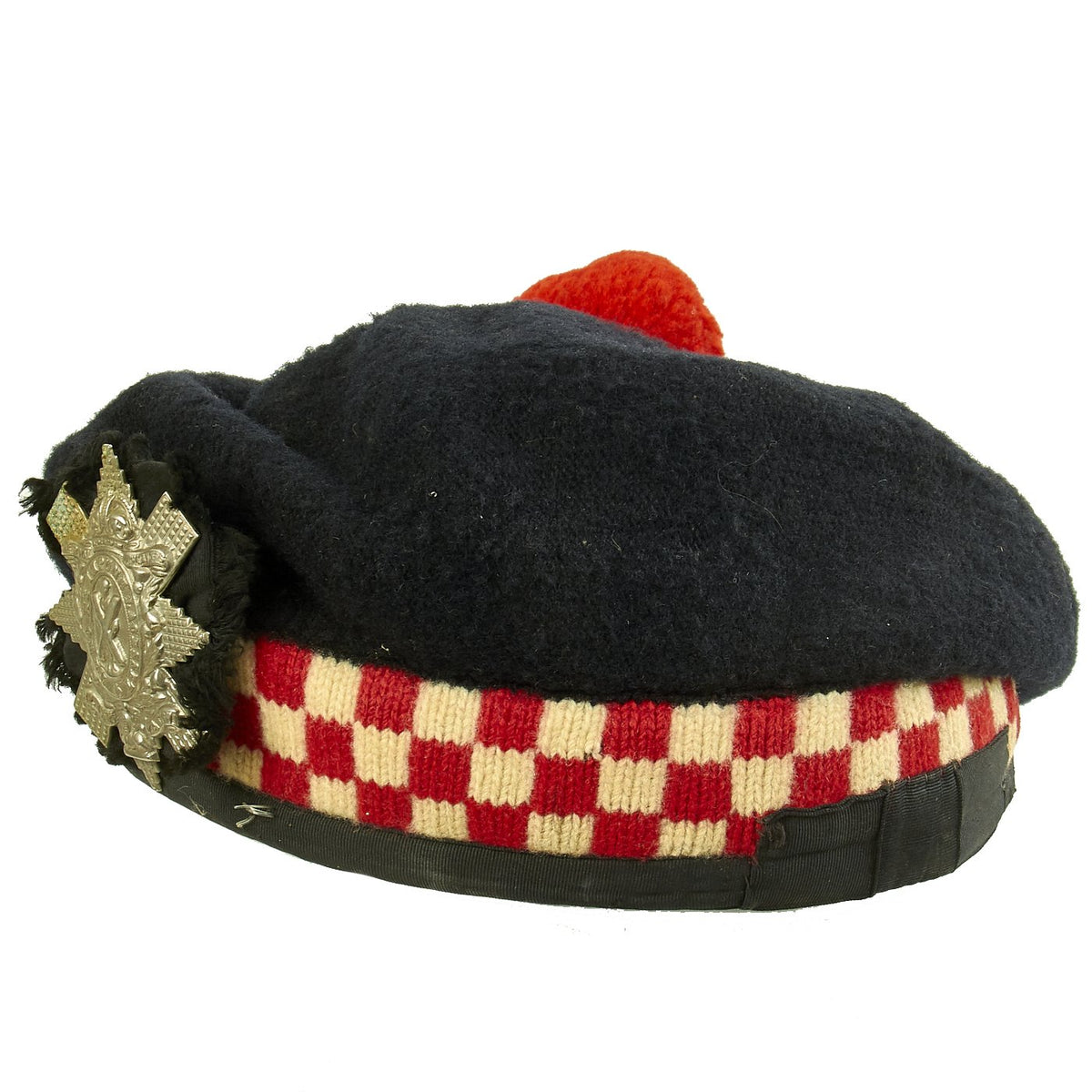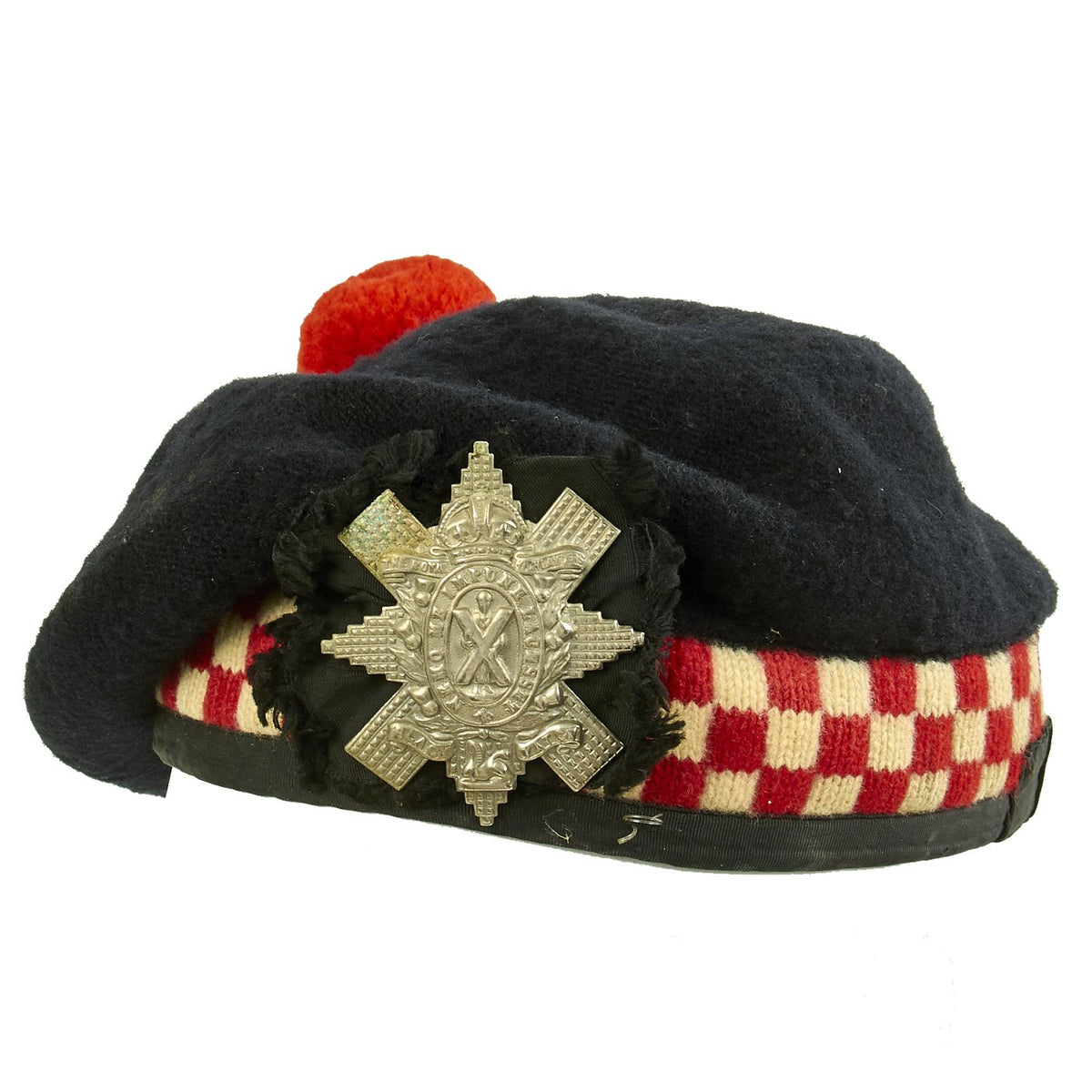Original British Black Watch Royal Highland Regiment Scottish Balmoral Bonnet – Size 6 3/4 Original Items
$ 295,00 $ 118,00
Original Item: Only One Available. Known as the Balmoral bonnet in Scottish English or Balmoral cap otherwise, and formerly called the Kilmarnock bonnet, this design is a traditional Scottish hat that can be worn as part of formal or informal Highland dress. Developed from the earlier blue bonnet, dating to at least the 16th century, it takes the form of a knitted, soft wool cap with a flat crown. The center of the crown features a toorie, traditionally red. It is named after Balmoral Castle, a royal residence in Scotland. It is an alternative to the similar and related (informal) Tam o’ Shanter cap and the (formal or informal) Glengarry bonnet.
The Balmoral bonnet was used by most highland regiments until supplanted by the Glengarry Bonnet side cap. The Black Watch Royal Highland Regiment however retained the Balmoral Bonnet.
This example is in good condition, though it does show wear consistent with long service, both inside and out. It has the correct red and white “diced” checkerboard pattern around the bottom, with a black rosette on the front. Attached to the rosette is the Regimental Badge of the The Black Watch (Royal Highland Regiment) is which features a “King’s Crown”, indicating issue before 1952. The bonnet itself however is dated 1961, so the soldier who used it most likely had to replace the bonnet after receiving the badge.
The cap badge is distinctive, with the 8 pointed Star of the Order of the Thistle, bearing a banner reading THE ROYAL HIGHLANDERS at the top, and another reading BLACK WATCH at the bottom. Within this is a thistle wreath surrounding an oval with the Royal Motto of Scotland: NEMO ME IMPUNE LACESSIT (No one provokes me with impunity). This was the Latin motto of the Royal Stuart dynasty of Scotland from at least the reign of James VI when it appeared on the reverse side of merk coins minted in 1578 and 1580. The Very center of the badge is an image of St. Andrew with the Cross of Scotland, and at the very bottom is a Sphinx atop a tablet, added to the regimental emblems of all units that saw service in the Egyptian Campaign of 1801.
Very attractive, with loads of patina and ready to add to your Scottish collection!
Fast Shipping with Professional Packaging
Thanks to our longstanding association with UPS FedEx DHL, and other major international carriers, we are able to provide a range of shipping options. Our warehouse staff is expertly trained and will wrap your products according to our exact and precise specifications. Prior to shipping, your goods will be thoroughly examined and securely secured. We ship to thousands clients each day across multiple countries. This shows how we're dedicated to be the largest retailer on the internet. Warehouses and distribution centres can be located throughout Europe as well as the USA.
Note: Orders with more than one item will be assigned a processing date depending on the item.
Before shipping before shipping, we'll conduct a thorough inspection of the items you have ordered. Today, the majority of orders will be delivered within 48 hours. The delivery time will be between 3-7 days.
Returns
The stock is dynamic and we cannot completely manage it because multiple stakeholders are involved, including our factory and warehouse. So the actual stock may alter at any time. It's possible that you may not receive your order once the order has been made.
Our policy is valid for a period of 30 days. If you don't receive the product within 30 days, we are not able to issue a refund or an exchange.
You can only return an item if it is unused and in the same state as the day you received it. You must have the item in its original packaging.
Related products
Uncategorized
Uncategorized
Uncategorized
Uncategorized
Uncategorized
Uncategorized
Uncategorized
Armored Burgonet Helmet & Polearm from Scottish Castle Leith Hall Circa 1700 Original Items
Uncategorized
Uncategorized
Uncategorized
Australian WWII Owen MK1 Machine Carbine SMG Custom Fabricated Replica with Sling Original Items
Uncategorized
Band of Brothers ORIGINAL GERMAN WWII Le. F.H. 18 10.5cm ARTILLERY PIECE Original Items
Uncategorized
Uncategorized
Uncategorized
Armoured Fighting Vehicles of the World: AFVs of World War One (Hardcover Book) New Made Items
Uncategorized
Uncategorized
Uncategorized
Uncategorized
